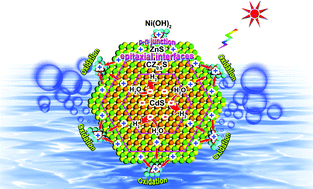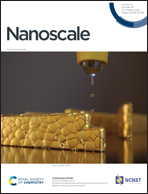One-dimensional CdS@Cd0.5Zn0.5S@ZnS-Ni(OH)2 nano-hybrids with epitaxial heterointerfaces and spatially separated photo-redox sites enabling highly-efficient visible-light-driven H2 evolution†
Abstract
Photocatalytic solar-to-fuel conversion has been of great interest in recent years. Nevertheless, the rational structural manipulation of photocatalysts toward an efficient H2 evolution reaction (HER) is still under-developed. In this work, by employing CdS nanowires as the growth substrate, unique one-dimensional (1D) CdS@Cd0.5Zn0.5S@ZnS-Ni(OH)2 heterostructures were first synthesized through the ultrasonic water-bath reaction combined with subsequent hydrothermal and in situ photo-deposition processes. Under the optimized conditions, CS@30CZ0.5S@40ZS-3N with 30 wt% Cd0.5Zn0.5S, 40 wt% ZnS, and 3 wt% Ni(OH)2 achieves a visible-light-driven HER activity as high as 86.79 mmol h−1 g−1 (corresponding to an apparent quantum yield of 22.8% at 420 nm), which is 4 and 119 times higher than that of Pt-decorated CS@30CZ0.5S@40ZS and CdS, respectively. In addition, CdS@Cd0.5Zn0.5S@ZnS-Ni(OH)2 is also endowed with a good stability for H2 production under long-term irradiation. The spatial separation of photo-redox sites and epitaxial heterointerfaces in CdS@Cd0.5Zn0.5S@ZnS-Ni(OH)2 nanowires facilitate the charge transfer and separation effectively, accounting well for their superior photocatalytic capability. The results indicated in this work could benefit the exploitation of high-performance nanostructures for promising photocatalytic applications.



 Please wait while we load your content...
Please wait while we load your content...